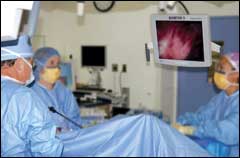Siemens Healthineers has unveiled the Magnetom Flow, its first 1.5 tesla (T) platform for MRI with a closed helium circuit and no quench pipe.
The amount of liquid helium required for cooling has been reduced to 0.7 liters from as much as 1,500 liters due to the company’s Dry Cool technology. A quench pipe was previously needed to safely allow cold helium to escape from the building directly into the atmosphere in the event of an emergency shutdown. The new system with a bore size of 60 cm covers the entire range of applications for MRI, according to the company.
Comprehensive use of image reconstruction based on artificial intelligence can enable shorter measurement times with improved image quality. Magnetom Flow’s high degree of automation is designed to simplify the MRI workflow.
Magnetom Flow is the second reduced helium MRI platform from Siemens Healthineers with Dry Cool technology. The company has set a goal of making a contribution to greater sustainability in the healthcare sector in the coming years with this and other technologies.
“The world’s population is growing and with it the need for MRI exams. However, the simultaneous rise in cost pressure and lack of personnel make it difficult to operate MRI economically,” says Andreas Schneck, head of MR at Siemens Healthineers. “The Magnetom Flow platform provides the answer to the challenges facing healthcare systems. It increases productivity in routine clinical practice due to its high degree of automation and makes a decisive contribution to sustainability with the Dry Cool technology.”
Magnetom Flow is also designed for reduced energy consumption. With the help of the improved Eco Gradient Mode, the system automatically switches off energy-intensive components when they are not needed. With Eco Power Mode in combination with helium-free technology, it is possible to save a further 30% in cooling capacity overnight, according to Siemens.
Magnetom Flow also features a compact size of less than 2 meters in height, 24 square meters in footprint, and the lack of a quench pipe.
The system is equipped with AI-supported image reconstruction. Measurement times can be reduced by up to 50%, while image quality is doubled, according to the company.




